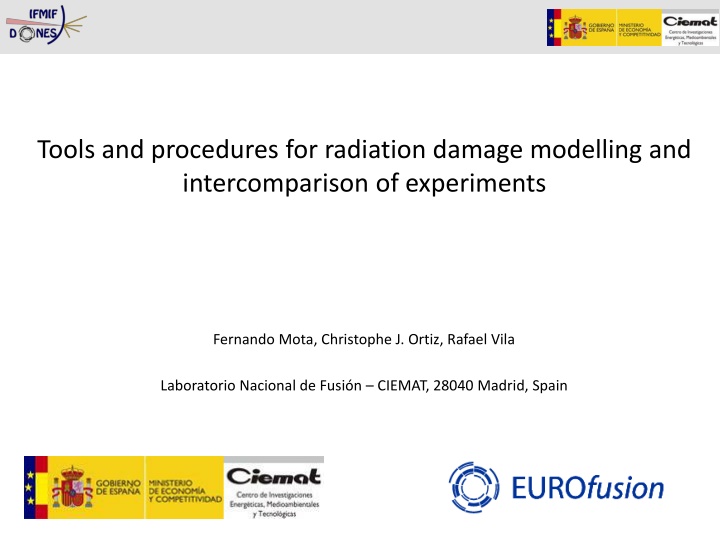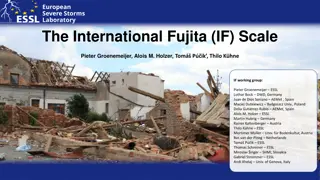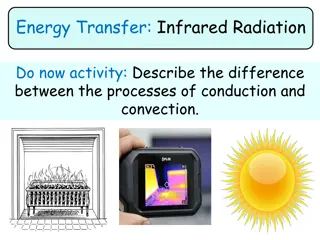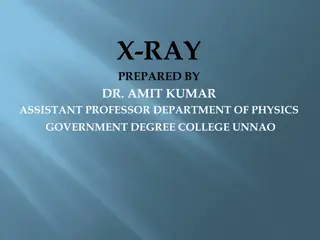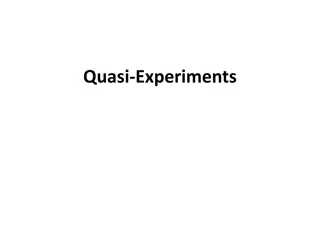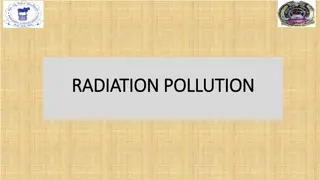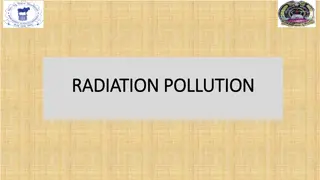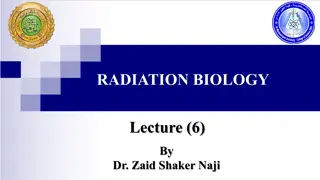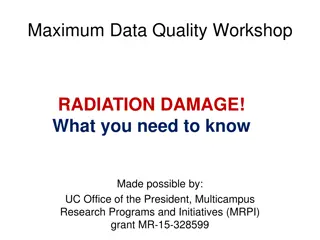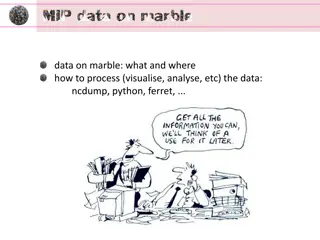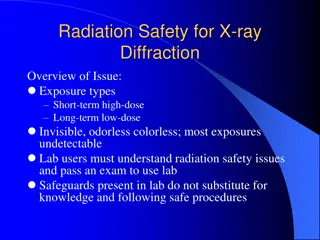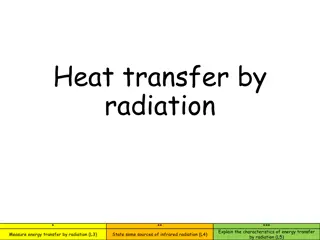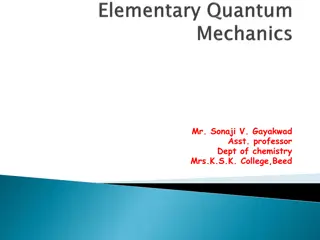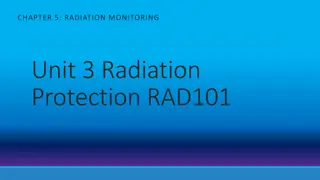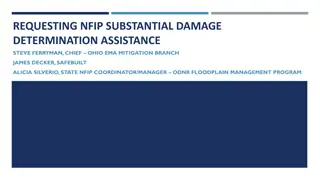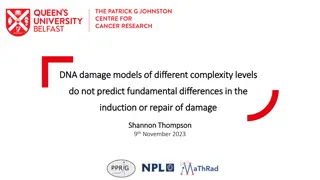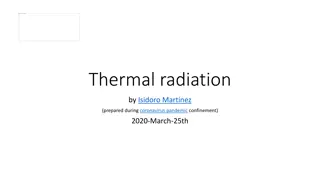Tools and Procedures for Radiation Damage Modeling and Intercomparison of Experiments
Calculation and comparison of radiation damage under different irradiation conditions to assess the impact on materials. Various factors affecting damage dose are considered, including atomic displacement, PKAspectrum calculation, simulation of irradiation processes, and identification of impurities. Issues related to reproducing fusion damage in materials with different irradiation facilities are discussed, highlighting differences in total dose, neutron spectrum, gas production, and more. Techniques like BCA-MD coupling are developed for a comprehensive comparison of irradiation experiments based on defects and clusters in materials.
Download Presentation

Please find below an Image/Link to download the presentation.
The content on the website is provided AS IS for your information and personal use only. It may not be sold, licensed, or shared on other websites without obtaining consent from the author.If you encounter any issues during the download, it is possible that the publisher has removed the file from their server.
You are allowed to download the files provided on this website for personal or commercial use, subject to the condition that they are used lawfully. All files are the property of their respective owners.
The content on the website is provided AS IS for your information and personal use only. It may not be sold, licensed, or shared on other websites without obtaining consent from the author.
E N D
Presentation Transcript
Tools and procedures for radiation damage modelling and intercomparison of experiments Fernando Mota, Christophe J. Ortiz, Rafael Vila Laboratorio Nacional de Fusi n CIEMAT, 28040 Madrid, Spain
Motivation: Calculation and comparison of radiation damage under DONES and Fusion conditions Goal of DONES: Test materials under equivalent neutron fusion irradiation conditions Will IFMIF-DONES produce similar radiation damage to DEMO ? Then our main objective is to identify in which conditions two neutron irradiation experiments are equivalent. In order to compare the radiation damage induced by neutron irradiation experiments, several issues that affect the damage dose in the materials have to be considered: o Calculation of the atomic displacement induced by neutrons Calculation of the PKAspectrum induced by different neutron sources (MCNP, NJOY, nuclear data libraries) Calculation of the radiation damage associated to the PKAspectrum o Simulation of thermally-activated processes during irradiation Identification of atomistic mechanisms and impurities (He, C, ) that play important role Use of adequate kinetic models (diffusion equations, kinetic Monte Carlo, etc ) F. Mota | IAEA CPR F44003 | 26th November 2017 | Page 2
Issues to reproduce fusion damage in materials with other irradiation facilities The root cause of the differences between neutron irradiation experiments Total dose Neutron spectrum o Gas production (H, He) o PKAspectrum - primary damage and clustering o Transmutation Impurities could affects to the macroscopic properties The root cause of the differences between ion irradiation experiments and neutron irradiation experiments Damage dose rate is different The PKAspectrum is different The volume of irradiation is different (The damage induced by ions is more concentrated than the one induced by neutrons) But, the most import issue is to identify why all these previous parameters produce different damage. To find the most important magnitudes to compare. F. Mota | IAEA CRP F44003 | 26th November 2017 | Page 3
How to compare irradiation experiments The dpa is widely used to characterize the primary displacement damage induced by neutron, but currently, there are several concepts of dpa. dpaNRT dpaarc-dpa dpaBCA Therefore, we have to be careful when we use them because the comparison of different irradiation experiments using different dpa concepts could give contradictory conclusions. In addition, any dpa concepts only give information about point defects Therefore, more information about the primary damage would be desirable to compare irradiation experiments In order to give more information to the comparison of irradiation experiment We have developed a methodology coupling BCA-MD (BCAMD-CIEMAT methodology) to compare irradiation experiments in order to compare damages functions taking into account: o Number of defects (Frenkel pairs) dpaBCAMD-CIEMAT) o Fraction of defects in clusters o Size distribution of clusters Therefore, this technique will give valuable information which could help to design more reliable nuclear fusion equivalent irradiation experiments to test materials.
Results with BCAMD-CIEMAT The damage functions of number of Frenkel Pair for different DEMO concepts (DCLL, WCLL, HCPB), IFMIF-DONES and nuclear fission facilities (BR2, HFR-PETTEN) have been compared using this methodology Comparison of HFTM of IFMIF-DONES with different concept of DEMO (DCLL, WCLL, HCPB) damage functions for Iron Comparison of different DEMO concepts with Fission facilities damage functions for Iron As it is expected, as results of the comparison of the damage function of iron for number of Frenkel pairs is that , DONES-HFTM resulting an excellent facility to reproduce nuclear fusion conditions for structural materials. Contrary to the results obtained for nuclear fission facilities.
Proposal Therefore, it is important to make a comparison of the different dpa concepts calculated for different irradiation facilities like fission reactor, spallation neutron sources, fusion facilities and DONES-HFTM in order to quantify how far are from each others. But the most important issue is to identify the minimum amount of parameters representative of the damage is needed to compare, with the aim to figure out whether two irradiation experiments are similar or not. In addition, to comment that the BCAMD-CIEMAT methodology could give valuable information to try to solve this question, whether two irradiation experiments are equivalent or not, because both, the defect formation calculation is more realistic and information about the clustering is provided.
